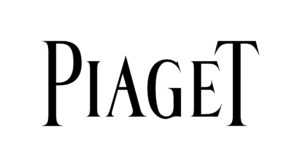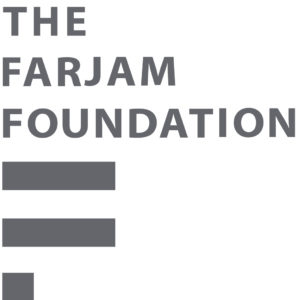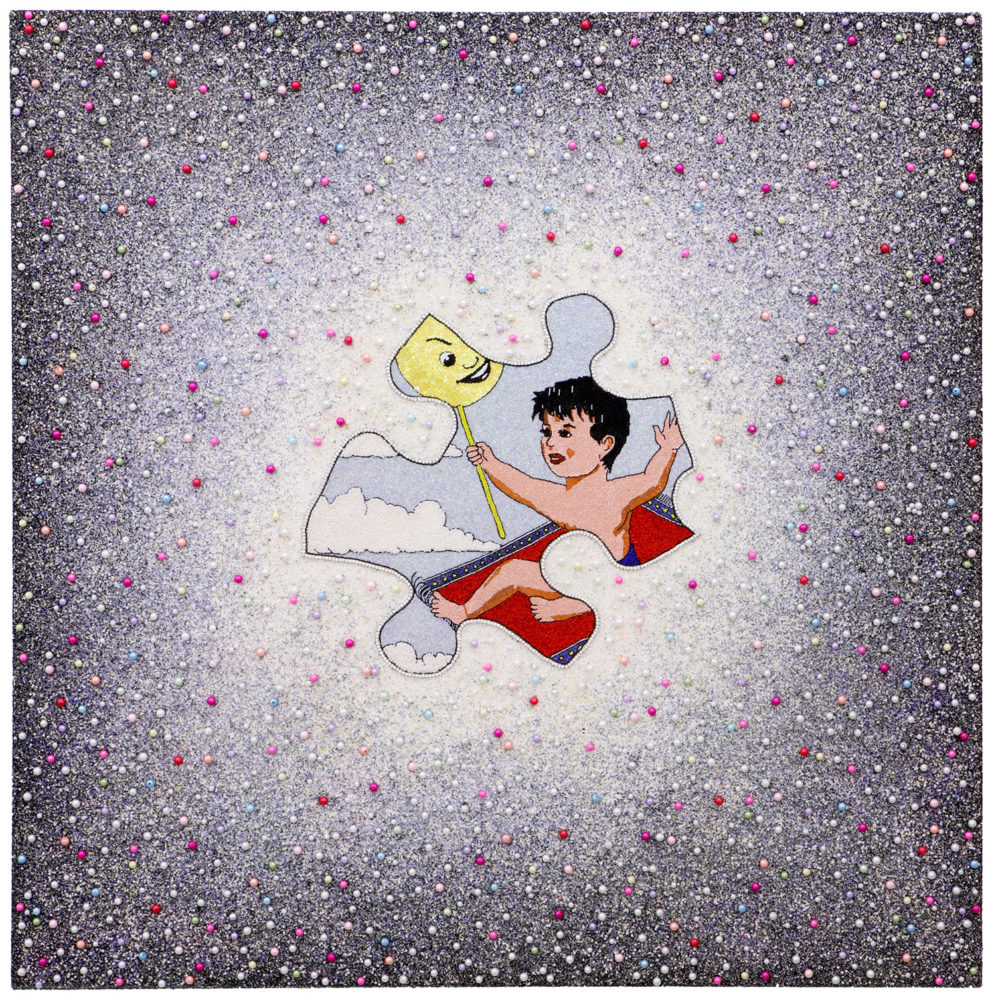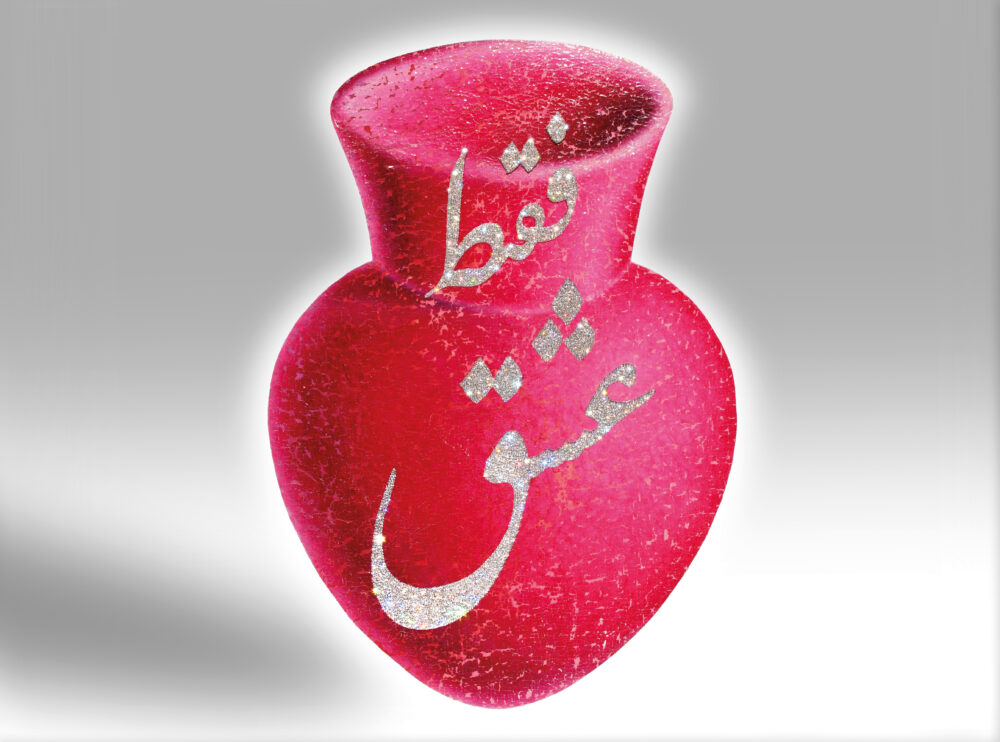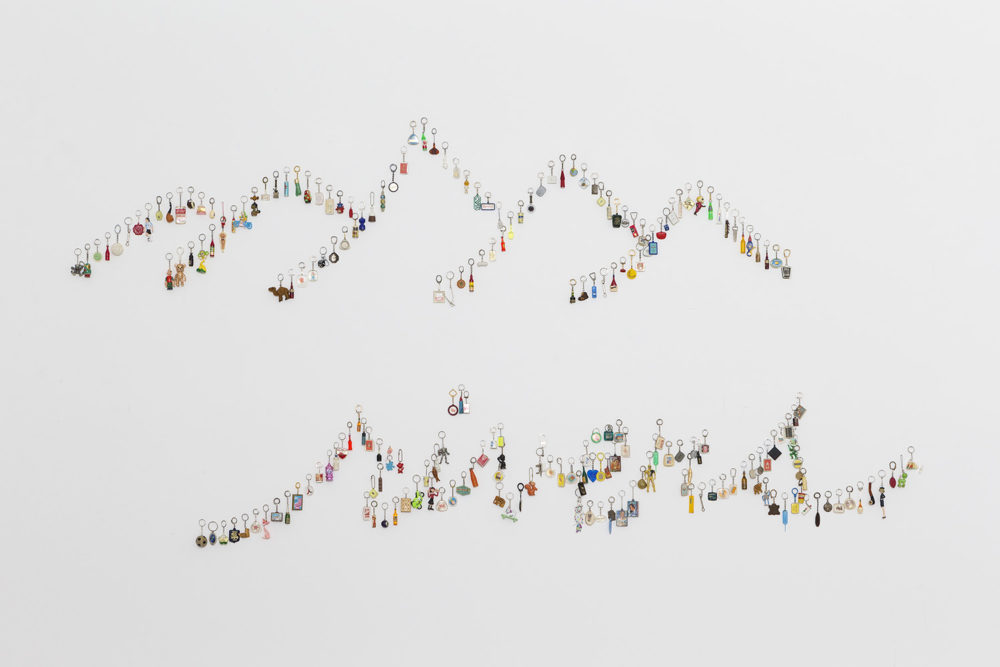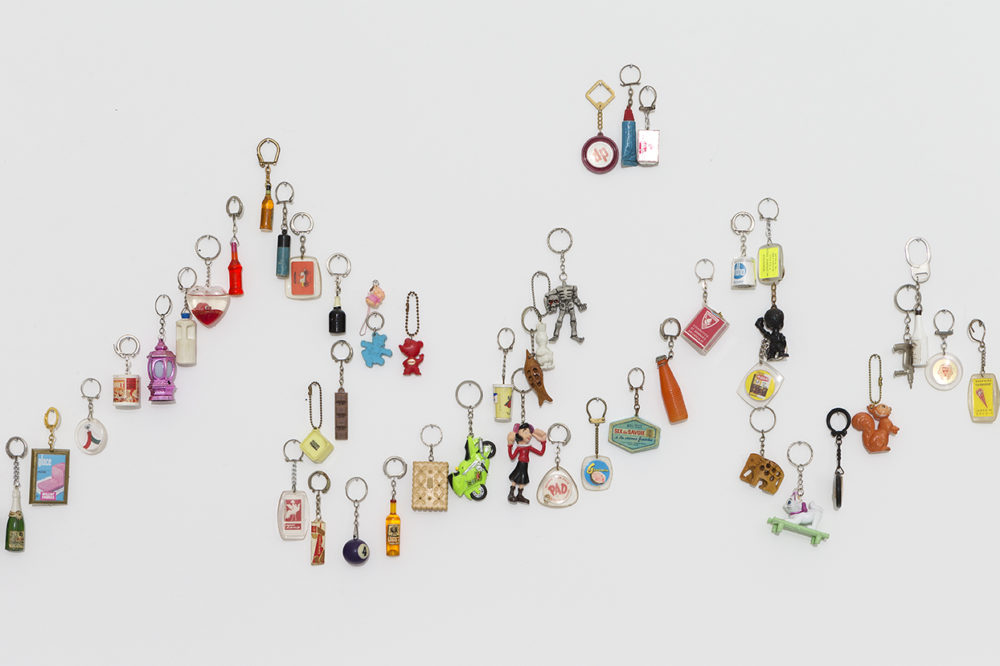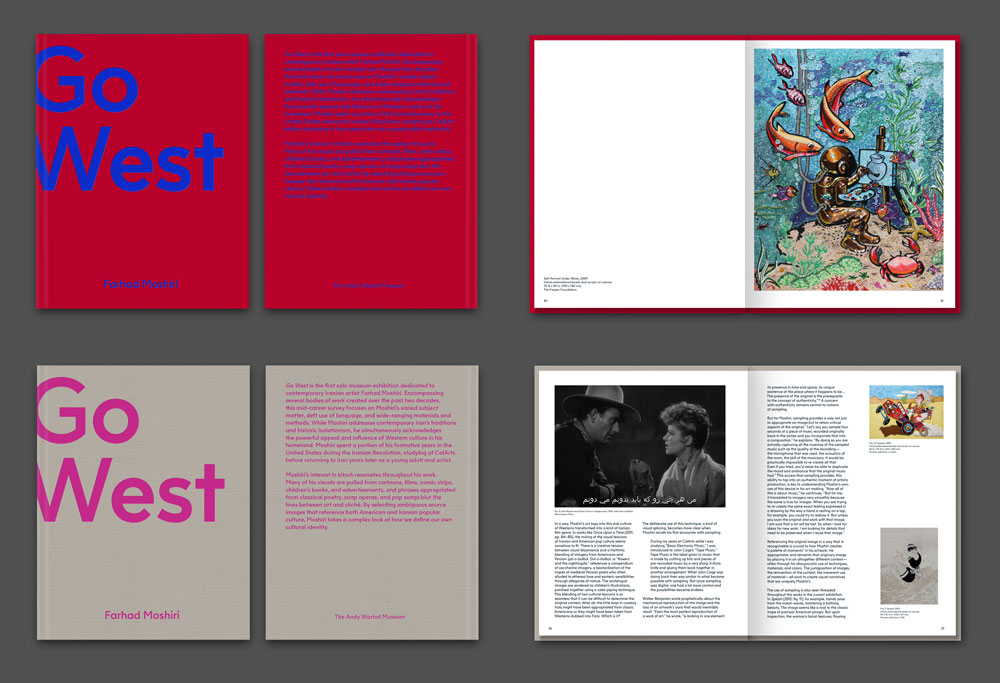Go West is the first solo museum exhibition of Iranian artist Farhad Moshiri.
Farhad Moshiri: Go West
October 13, 2017 – January 14, 2018
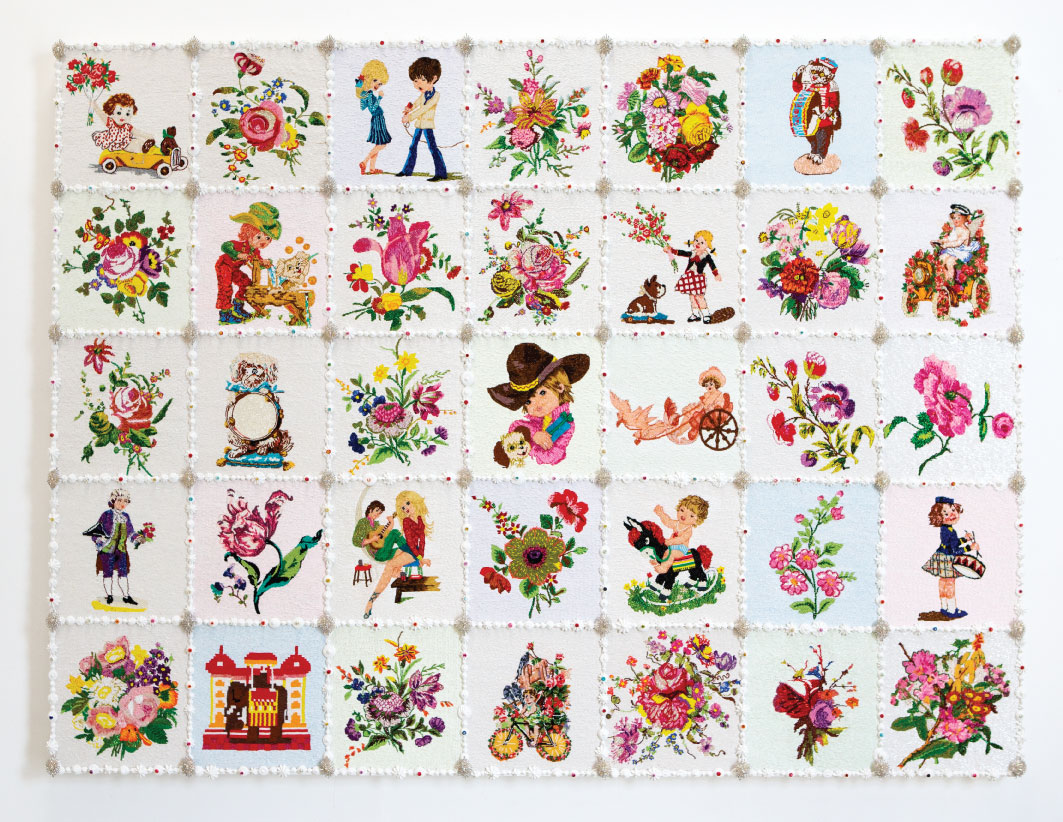
Farhad Moshiri, Once Upon a Time, 2011, The Khazaei Foundation
Kitsch and Pop
Moshiri’s interest in Pop art and kitsch resonates throughout his work. Many of his visuals are pulled from cartoons, films, comic strips, children’s books, and advertisements, while phrases appropriated from classical poetry, soap operas, and pop songs blur the lines between art and cliché. By selecting ambiguous source images that reference both American and Iranian popular culture, Moshiri takes a complex look at how we define our own cultural identity.
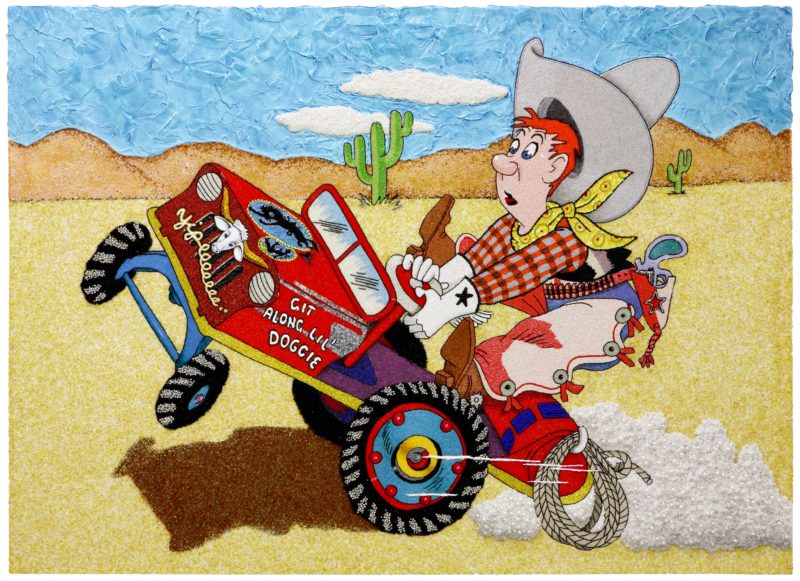
Farhad Moshiri, Yipeeee, 2009, Hand embroidered beads and acrylic on canvas, Private Collection
Moshiri was first introduced to American films at his father’s local movie theater. He watched movies such as John Wayne’s Stagecoach (1939) dubbed in Farsi. In classic Westerns, the American landscape was presented as a frontier with big skies and endless opportunities for glory, revenge, and romance. As Moshiri grew older and relocated to the United States, his impression of the West became more complex, tinged with humor, irony, and satire. Like Warhol, Moshiri appropriates imagery from found sources, such as the mechanical Rodeo Joe toy that inspired Yipeeee.
Mundane Materialism
In his work, Moshiri often transforms mundane materials such as plastic pearls, glass beads, acrylic paint, crystals, knives, and machine-made Persian rugs into intricate, laborious works of art. These materials function as a response to contemporary Iranian society—where name brands are highly valued and often imitated by local entrepreneurs—and are also familiar to most Western viewers.
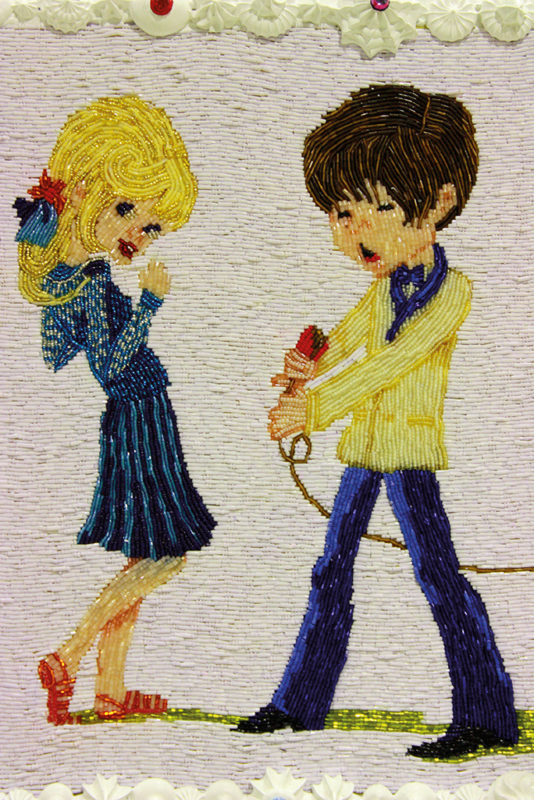
Farhad Moshiri, Once Upon a Time (detail), 2011, Acrylic, glaze, hand embroidered beads, and plastic pearls on canvas, mounted on board, The Khazaei Foundation
Originally commissioned as a window display, Once Upon a Time resembles a lush white layer cake with frosted borders and decorative toppings. Using piping tools, Moshiri applied thick acrylic paint to the canvas, the same way a pastry chef decorates a dessert. Closer inspection also reveals the elaborate beadwork used to construct a grid of images sourced from vintage postcards: sweethearts in love, domesticated animals, and exotic flower arrangements.
Tradition and Technique
Moshiri mines his own culture for inspiration and subject matter. He incorporates motifs, images, and stories drawn from Iranian culture, nodding to forms such as Persian rugs, ancient pottery, and classical poetry. The artist often adopts traditional artistic practices, at times even outsourcing the production of his work; for example, he has enlisted skilled female workers previously employed in Tehran’s wedding garment to assist in creating labor-intensive embroidered works.
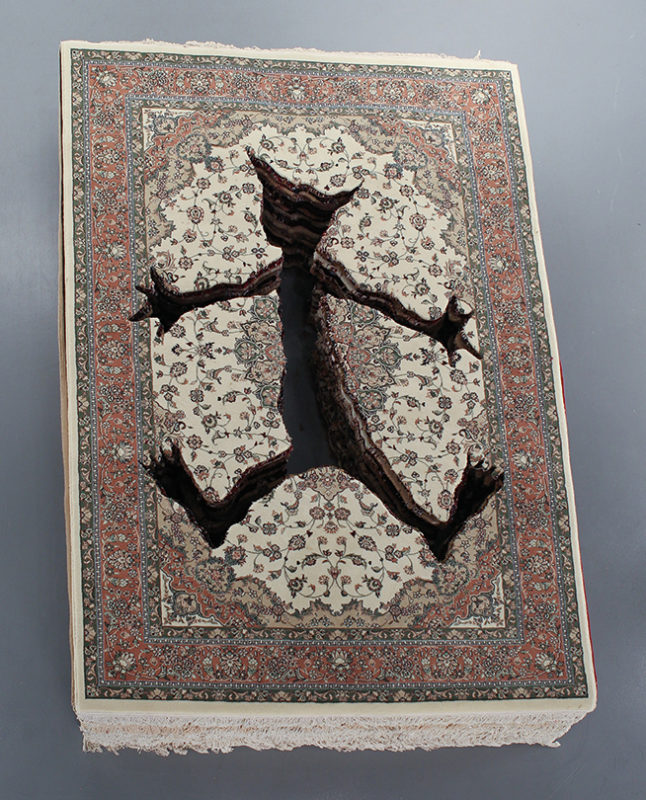
Farhad Moshiri, Crash, 2011, 43 stacked machine made carpets and video installation, The Farjam Foundation
Slices of American and Iranian culture collide in Farhad Moshiri’s sculpture Crash. For thousands of years, carpet weaving has been known as a traditional craft and art form in Iran, yet in this artwork the rugs are mass-produced and inexpensive, stacked in a thick pile, and punctured by a cartoonish cat-shaped hole. Moshiri tends to display Crash alongside episodes of Tom & Jerry, a show well-known in both the United States and the Middle East. Here it appears that Tom, the cat, has crashed through the stacked rugs.
There is in Moshiri’s art a process of perpetual translation, of cross-pollination of the cultural apparatuses of Iran and America.
Image Gallery
Publication
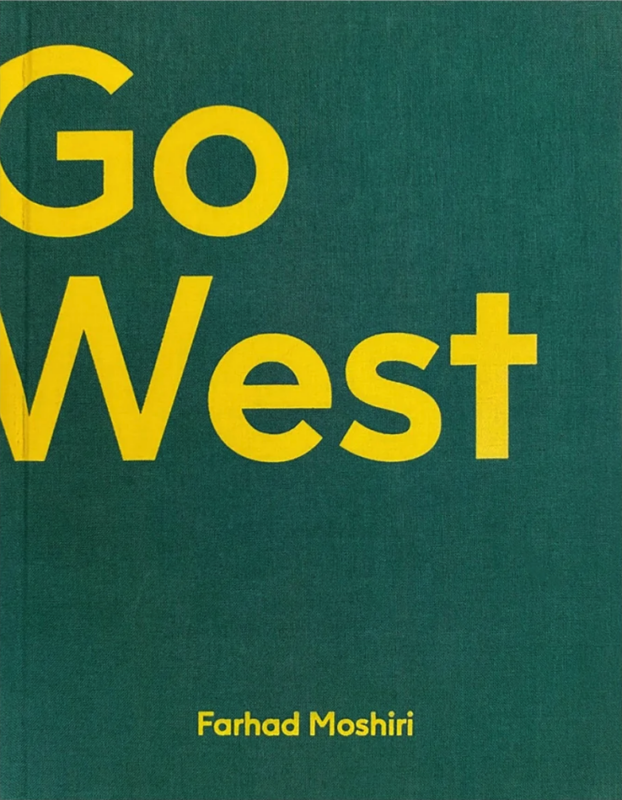
Go West: Farhad Moshiri
Farhad Moshiri: Go West was produced to accompany the 2017 exhibition of the same name. Moshiri’s richly embellished paintings and sculptures explore the intersection of eastern and western popular culture, the tension between traditional craft and contemporary art practice, and the malleable nature of identity. The volume includes essays by contemporary art history scholars and is illustrated with full-color images of pieces in the exhibition as well as documentary photographs of the artist at work.
Mitra M. Abbaspour, Shiva Balaghi, and Jose Diaz
Limited edition hardcover (four versions), 132 pages, 68 illustrations
The Andy Warhol Museum, 2017
$39.95


